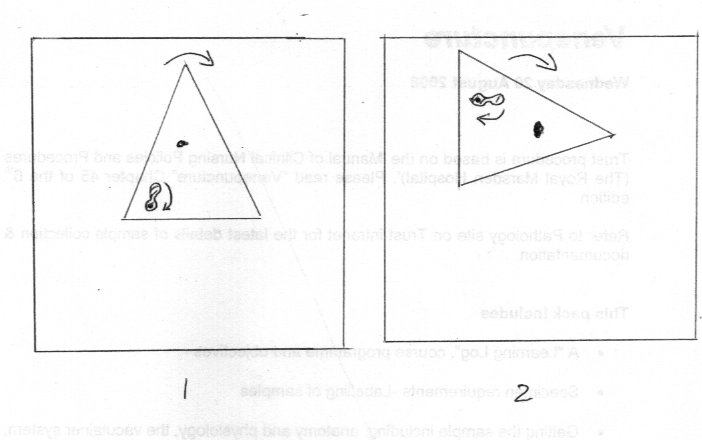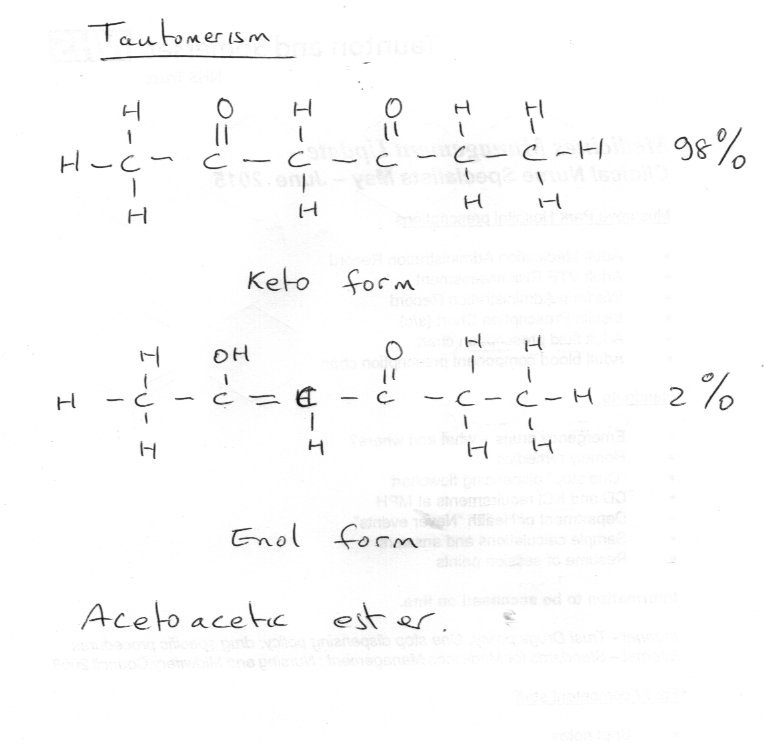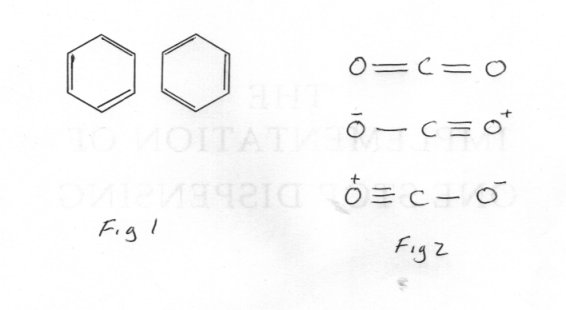-
Posts
18485 -
Joined
-
Last visited
-
Days Won
108
Content Type
Profiles
Forums
Events
Everything posted by studiot
-
Well mathematically sin(x) is always finite and is considered a 'well behaved' function. But tan(x) is another matter. Then again the Gabriel's horn example has a finite volume contained in a 3D shape of infinite surface area. I don't know how that would scale up a dimension or two.
-

Questions about the geoid (Split from Lake Balaton thread)
studiot replied to michel123456's topic in Earth Science
I went back through it and can't find the maps themselves either, although the link to Seasat was there. I could have sworn I included the maps themselves but perhaps it was in another thread. But I can't find them there either finding anything on this benighted site is a real pain. So I will look out the data for you. -
Again I say why not? Have you considered Gabriel's horn?
-
Yes, I apologise to J.C. MacSwell, I have just found it. But to whoever said it I still ask the question why not?
-

Edge of the universe split from A centre of mass of the Universe.
studiot replied to MarkE's topic in Speculations
Space time is 4 dimensions, not 3 , EFE allow additional dimensions can be included. The various string theories have many more dimensions. Einstein played with them view EPR and ER one month later. Einstein was not a dummy. . Try reading what Strange said a bit more slowly, then you might see the error in your reply. By the way, Spacetime is not just any old unrestricted set of 4 axes. It is subject a a restriction. -
Why not? Edit Wrongly attributed to J.C. MacSwell
-
I think you have cracked it. The designer went to get medical help and they wouldn't let him back. I can tell you that it got worse when windows 10 came out.
-
Not only that but you have to surmount the issue of when you measure the density and volume. This is non trivial as it involves establishing relativistic simultaneity. But also note one more thing from the equations. Whilst the density may be susceptible to a local solution as a limit, the definition also involves multiplication by the 'moment' arm which includes terms the size of the Universe, and are clearly going to be subject to substantial relativistic effects. J.C. MacSwell, Does this not also answer your query?
-
Ah a mathematician has noted what it says in the equations I quoted. Integrating density over space. But since we observe matter fleeing from us at fantastic velocities, how would me measure this 'space' relativistically and how would we assign values to the 'density'?
-

Edge of the universe split from A centre of mass of the Universe.
studiot replied to MarkE's topic in Speculations
So where is all this radiation, that is presumably extra to any that we can already account for? -
Unsubstantiated and therefore empty claims. You therefore agree that the Universe has no COM? I have no difficulty defining it. I just agree that there is no COM for the observable universe either, or rather that it has no meaning. No matter how small the distance of observation away, the observation take finite time to arrive so refers to the past. I cannot observe any part of the rest of the universe in my present. So the entire observable universe is always in the past. I don't necessarily but it would become a matter of blind faith not Science to believe it exists, before the event. I can never prove it.
-
How can mass that may have ceased to exist millenia ago, be counted in the centre of mass of the present day universe? The observable universe is not an instantaneous universe.
-
Yes indeed they do, but the issue is change over time which you mention so clearly here. If you study the mechancis of machines you will study several different instantaneous centres including an instantaneous COM. So there is no such thing as the COM of the universe. Consider the following apparatus. A heavy dumbell is eccentrically attached to a non symmetrical lighter lamina so that it can rotate, independently of the lamina. The lamina itself can also rotate. Both are within a fixed frame. The apparatus is set so the movable parts are spinning. It can easily be seen that, as you rightly say, it moves about and you can calculate the locus of its movement. Now expand the diagram to the size of the universe and replot it observing due regard to relativity. What does an instantaneous centre mean in this case?
-
Please define centre of mass and show how this applies to the rocket/exhaust system under the conditions where I specified.
-
1) Agreed 2) https://ehtrust.org/france-new-national-law-bans-wifi-nursery-school/ 3) Agreed 4) agreed 5) Agreed 6) No idea, but 40 Hz is getting close to the audio danger frequency (of 25 hz, if my memory serves me correctly) so it may have some effect but would it be good?
-

Questions about the geoid (Split from Lake Balaton thread)
studiot replied to michel123456's topic in Earth Science
Hi Neil I'm sorry I thought the original parent thread would be easily referenced in this split off one but I had to dig to find it. The missing material is here, including the satellite maps etc. https://www.scienceforums.net/topic/98386-laser-curvature-test-on-lake-balaton/?page=9 I'm sorry the ridiculous new forum software no long numbers posts so referring to individual ones is now a nightmare. -
Thanks for the answer, that clears up a lot. You should be aware of and beware of the phenomenon of tautomerism where there is actually a mixture of two structural forms with the same raw formula. The example in the sketch is for acetoacetic ester which exists as a mixture of the two forms which can be isolated. Once isolated the resultant fairly quickly degrades back to the mixture proportions (correct at room temperature). This is not resonance so it is easy to mix them up. Feel free to ask for more detail.
-
Ok so my beef with the first line of the OP is shown in my Fig 1 It is clearly wrong to state that the resonance orbital, hybrid or not, doesn't represent actuality. The above two Kekule primitive structures for benzene show alternate double and single bonds, but neither can be isolated from a flask of benzene, because neither actually exist. In fact all the bonds appear identical (with length 1.4A rather than the 1.5+A for a carbon-carbon single bond or 1.3A for a double). So the bonds as diplaced in the 'resonating' structures do not exist, but bonds which have a character which is a mixture of both do. The problem with the summary is this The electron pairs need not be only in Pi bonds as stated. My Fig 2 shows clearly that the resonating structures in carbon dioxide have both polar and non polar characteristics. Two have in fact charge separation by transfer of electrons. I think it will take at least one substantial post, starting at the beginning, to put all this right and explain it properly. So hannoe, speak up for yourself, and please tell us if English is not your first language so we can adjust for that.
-
Industrially manufactured CDs have pits which are mechanically pressed into the plastic by a metal master. User recordable CDs don't have physical pits. They incorporate a chemical layer which undergoes a local chemical change when 'burned' with the laser writer. These have different optical properties and are equivalent to the pits, but can degrade over time or heat or high levels of illumination. You would have to experiment with a CD or piece of one to see if it is specular enough for your purposes.
-
Glad it was helpful and understandable despite the poor spelling (sorry about that), feel free to ask if you want any more.
-

Edge of the universe split from A centre of mass of the Universe.
studiot replied to MarkE's topic in Speculations
How would you propose that this edge 1) Interacts with radiation? 2) Works with expansion - is it also expanding (and perhaps getting thinner) or what? -
Why (or when) would you expect an ice lattice to shatter? A glass 'lattice' - if it can be called that - is not a true crystal lattice and always contains locked-in stresses or residual stresses. It is these stresses that are responsible for the sudden shattering of glassy materials. Ice, on the other hand, is a true crustal lattice and if perfect contains no such stresses. So ice will only fail if foundation supports are removed by the initial impulse so the edifice crumbles under gravity or some other distributed force, such as surface tension.
-
Would you agree with the first line then? One of the characteristics of resonance structures is the change in bond length from the formative resonance structures. But it does IMHO show Hannoe has not properly distinguished between atomic orbitals, hybrids orbital, molecular orbitals (and says so her/his self). I was just waiting for more questions from the OP about what I said. There have been too many instances just lately where a question was asked and I or others put significant effort into an answer for an OP who never came back. It is, however, a good subject for discussion that may also benefit others.
-

Neutral elementary particles and electromagnetic waves
studiot replied to Butch's topic in Quantum Theory
Yes the photons can transfer momentum. -
Yes only. The concept makes no sense if external forces applied to the system would deform it as well as move it. The binary stars you mention act as a pseudo non deformable 'body' or system, as does the solar system, as does a galaxy, as does a rocket and its exhaust. But apply a sideways force to the exhaust once it has left the rocket and tell me what happens to the 'centre of mass' ? Alternatively, what happens if the rocket collides with an asteroid? Does it hit with the momentum of the whole system or just the rocket part?




